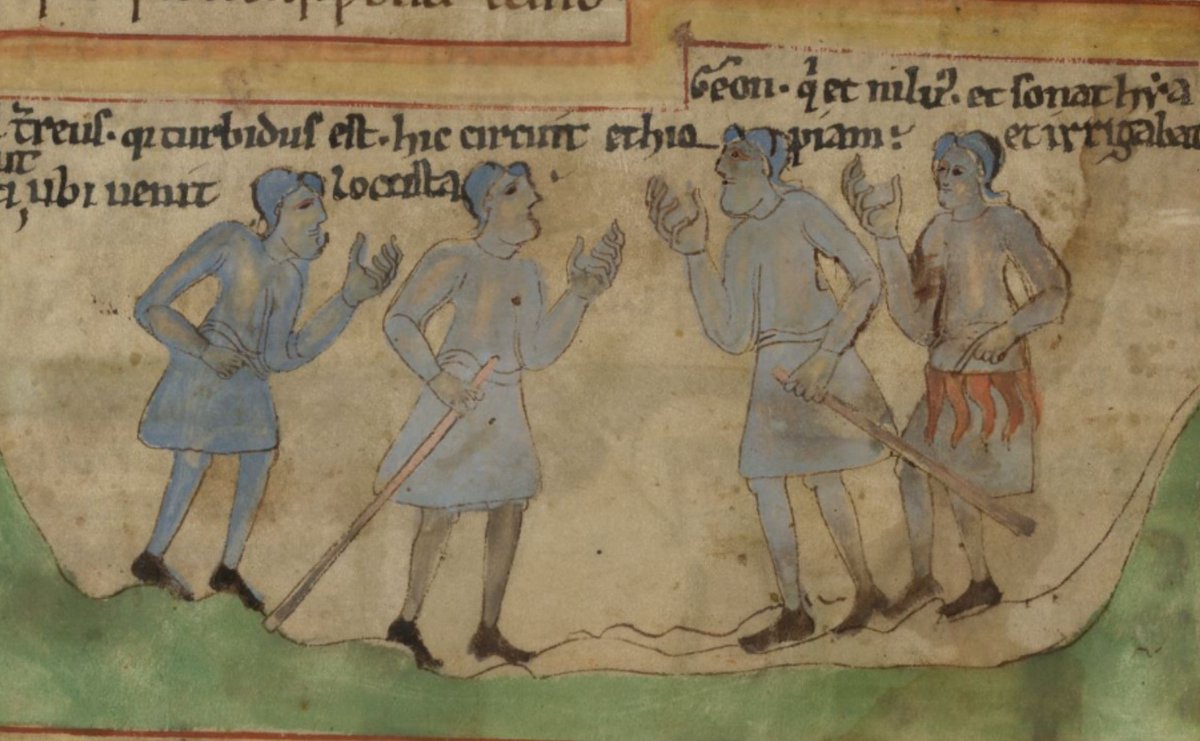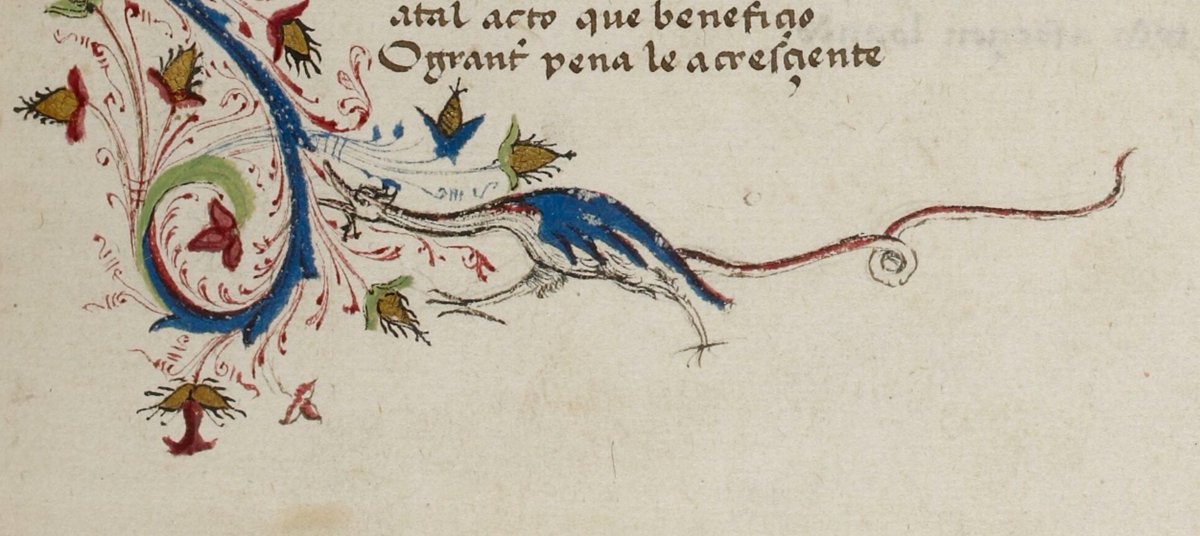🧵: Here are four Ethiopians from a late-tenth century Old English manuscript, depicted as blue men in accordance with a tradition of black-skinned people being described as blue.
Here are some thoughts on them.
(BL, Cotton MS Claudius B IV, f. 5v) #MedievalTwitter
Here are some thoughts on them.
(BL, Cotton MS Claudius B IV, f. 5v) #MedievalTwitter

They're called "Silhearwana," the Old English word for "Ethiopians." That there was a specific Old English word for this is a little unusual, since they usually just adopted Latin terms. JRR Tolkien thought the word meant "sun-burned," like the word "Ethiopian" did. 

I kind of wonder if Old English had its own term for Black people, rather than borrowing a Latin term, because of the presence of Black people in England at the time. 

As @Archaeofiend points out in his excellent article on the subject, there were certainly Black people living in turn-of-the-millennium England.
(See a great thread on his article here:
(See a great thread on his article here:
https://twitter.com/ISASaxonists/status/1371956826309279747)
But if Black people really lived there, why would white English authors call them "blue" and depict them like this?
(yes, "Black" and "white" are more modern categories, but I use them here as a shorthand)
(yes, "Black" and "white" are more modern categories, but I use them here as a shorthand)

Well, other ppl did. The ninth-century Annals of Ireland claimed that the Vikings brought a great host of "fir gorma" [blue men] back from Morocco, which seemingly meant Black people. The Annals claimed these blue men lived in Ireland for a long time. 

There's also the very confusing situation of Old English color words, which didn't always seem to indicate hue as much as they did things like reflectivity or intensity (this is why you get things like "brown swords" in OE poetry; "brun"[brown] meant shiny).
AND OE manuscript art plays very loose with color, so what we would think of as realism isn't really the aim of these artists, precisely. Here's Adam and God from the same MS, for instance, with blue hair.
(f. 6r)
(f. 6r)

A lot of work remains to be done on how we think about skin color (and color generally) in OE lit and manuscripts. Even more work remains to be done on figuring out how to move past racist paradigms that dismiss the presence of African ppl in early England.
I think @Archaeofiend and @ISASaxonists are doing the most interesting and important work rn on these racist paradigms and the dismissal of the presence and contributions of Africans in early medieval England.
See this talk by @ISASaxonists, for instance:
See this talk by @ISASaxonists, for instance:
https://twitter.com/erik_kaars/status/1410237269689176073
There's still so much work to be done rethinking early medieval England and its interactions with the larger world, and the presence in pre-Conquest England of people whose ancestors came from outside western Europe. 

• • •
Missing some Tweet in this thread? You can try to
force a refresh




















